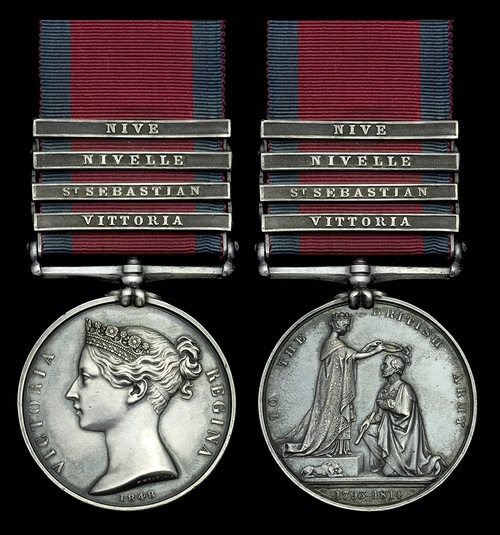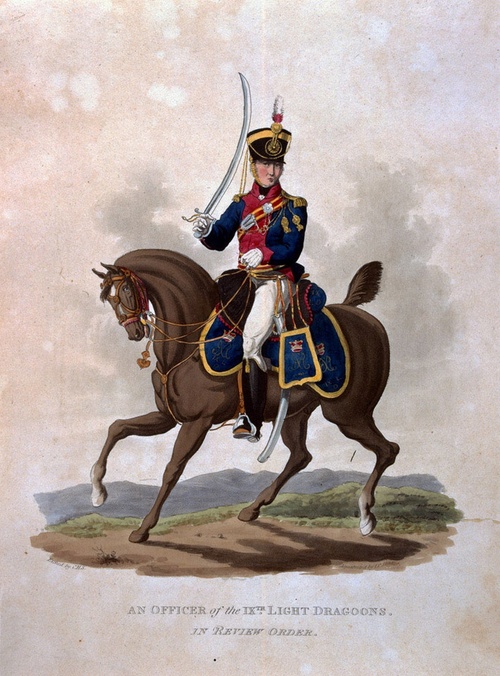Auction: 24003 - Orders, Decorations and Medals
Lot: 20
Military General Service 1793-1814, 4 clasps, Vittoria, St. Sebastian, Nivelle, Nive (Sir Wm. Herries. K.C.H. & C.B. Capt: Meuron's Regt. & D.A.Q.M.G.), contemporarily re-engraved naming in upright capitals, good very fine
The published Medal Roll notes the recipient as correctly entitled to these four clasps, but sans Knighthood and Orders, as a member of the 9th Light Dragoons and Staff.
William Lewis Herries was commissioned Ensign on 23 January 1801 and advanced to Lieutenant in March 1803; in September 1806 his regiment (the 9th Light Dragoons) were selected for service in the badly-managed expedition to the River Plate and occupation of Montevideo. Herries appears to have been seconded to the Staff as a Brigade Major and, after the withdrawal of the British force in South America, is next noted present for yet another abortive expedition - this time to Walcheren in 1809. Promoted Captain in the 9th in October that year, in June 1812 he exchanged (still as Captain) into the Regiment de Meuron, an infantry regiment which had originally been raised in Switzerland for service in the Dutch East Indies. However, Herries does not appear to have spent any time with the unit as within four months he was out in the Iberian Peninsula as A.D.C. to General Edward Paget - an appointment which was also extremely limited in duration, as Paget was captured by French cavalry during the Retreat from Burgos in November 1812: fortunately Herries avoided the fate of his commander.
From December 1812 until the end of the war (April 1814), Herries had a further Staff appointment as Deputy Assistant Quarter Master General and in that capacity was present at the battle of Vitoria (June 1813), Siege of St. Sebastian (July - September 1813), and the battles of Nivelle and the Nive (November and December 1813 respectively); he appears to have been with Sir John Hope during the infamous 'Sortie from Bayonne' when, early on the morning of 14 April, a French force surprised the British besiegers and inflicted significant casualties before the British rallied and forced them back; Hope was wounded and captured during the confused fighting, along with Herries - the latter receiving a musket ball to the knee. Their incarceration was thankfully brief, as the war had actually ended four days previously; it is generally believed that the French commander, General Pierre Thouvenot (a fervent Bonapartist), decided to carry out the attack 'in a fit of spite and frustration' at the news of Napoleon's abdication - an act which led to hundreds of needless deaths on both sides.
Promoted Major in June 1814, Herries remained in the Quarter Master General's department post-war and is noted in 1817 as Deputy Quarter Master General to the Forces serving in the Mediterranean. Further promotions followed (Colonel in 1837; Major-General in 1846; and Lieutenant-General in June 1854), with appointments to the Companionship of the Order of the Bath and Knighthood within the Royal Guelphic Order - he was also made Colonel of the 68th (Durham) Regiment of Foot in 1854. Lieutenant-General Sir William Herries died, aged 71, on 3 June 1857.
Subject to 20% VAT on Buyer’s Premium. For more information please view Terms and Conditions for Buyers.
Sold for
£520
Starting price
£320







